This is a painting that evokes the social concerns of Canadian painter Bertram Brooker (1888–1955), specifically his compassion for individuals who have been marginalized: the subject is a solitary, unwelcome member of society. As was customary for Brooker by the time he painted this work, the representational elements are combined with abstraction. The deeply haunted face of the man turning to stare at the viewer is in sharp contrast to the quasi-geometrical shapes behind him. In addition, as Anna Hudson notes, the three telephone poles recede into space: “Their function is to signal the absence of beauty in urban life, and, by implication, of harmonious social order.”
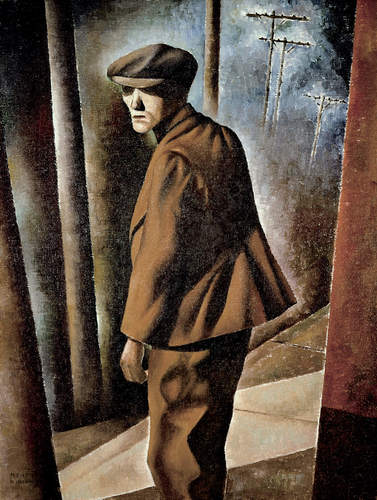
Bertram Brooker, The Recluse, 1939
Oil on canvas, 61 x 45.7 cm, private collection
The Recluse also underscores an important principle for Brooker concerning the relationship between social action and artistic practice:
“No sensitive man—whether artist or not—can remain unstirred by suffering on so gigantic scale as grips the world at present. As a man—as a citizen—as a member of the human fraternity—the artist should be prepared to do something about it. But, as artist, he should not preach about it. The moment he becomes a missionary he ceases to be an artist.”
This Spotlight is excerpted from Bertram Brooker: Life & Work by James King.
 Stitching the Archives
Stitching the Archives
 A Working-Class Hero
A Working-Class Hero
 Imagining Entangled Futures
Imagining Entangled Futures
 Bridging Far and Near
Bridging Far and Near
 Soft Power
Soft Power
 Imagining Emancipation
Imagining Emancipation
 A Priceless Portrait
A Priceless Portrait
 Meditation in Monochrome
Meditation in Monochrome
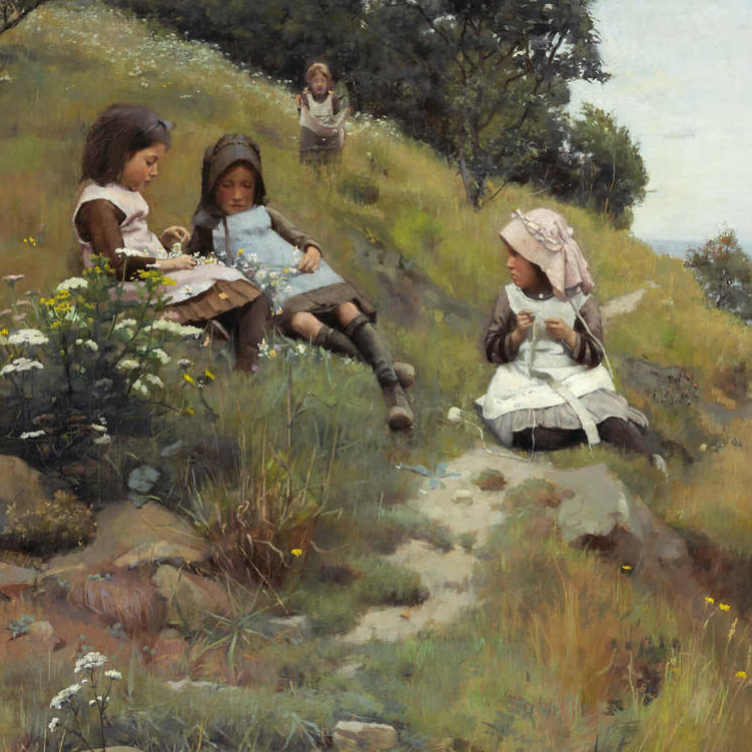 Making His Mark
Making His Mark
 Honour and Sacrifice
Honour and Sacrifice
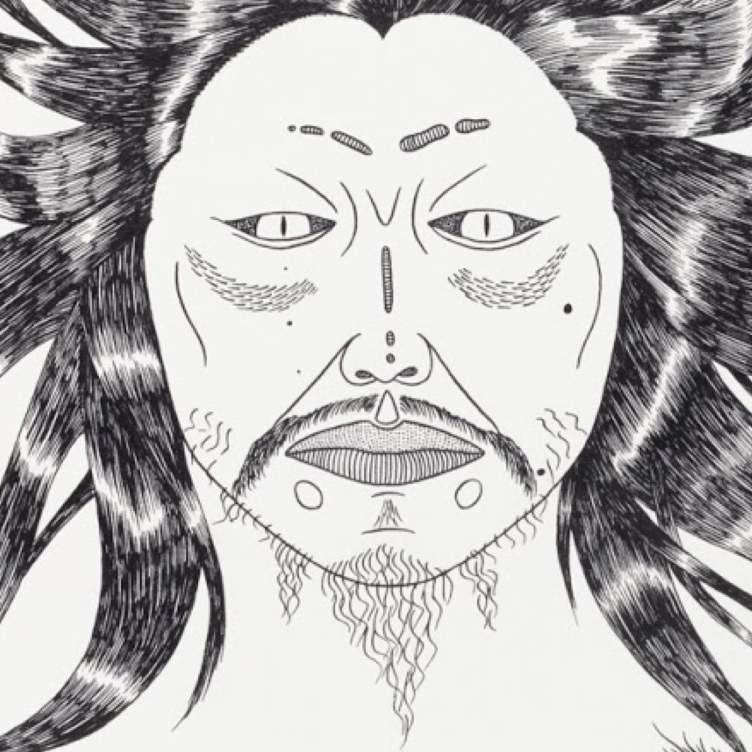 A Monstrous Vision
A Monstrous Vision
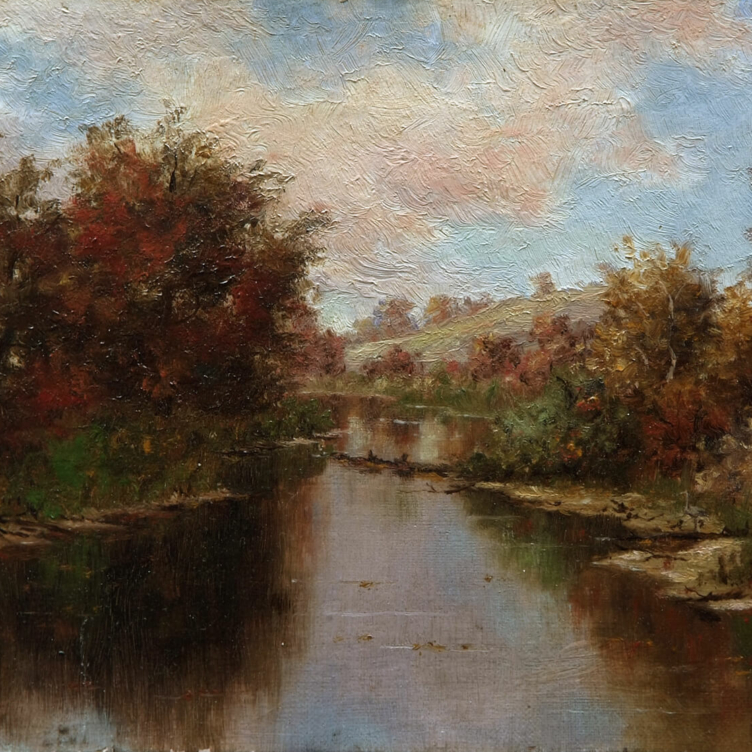 Remote Beauty
Remote Beauty
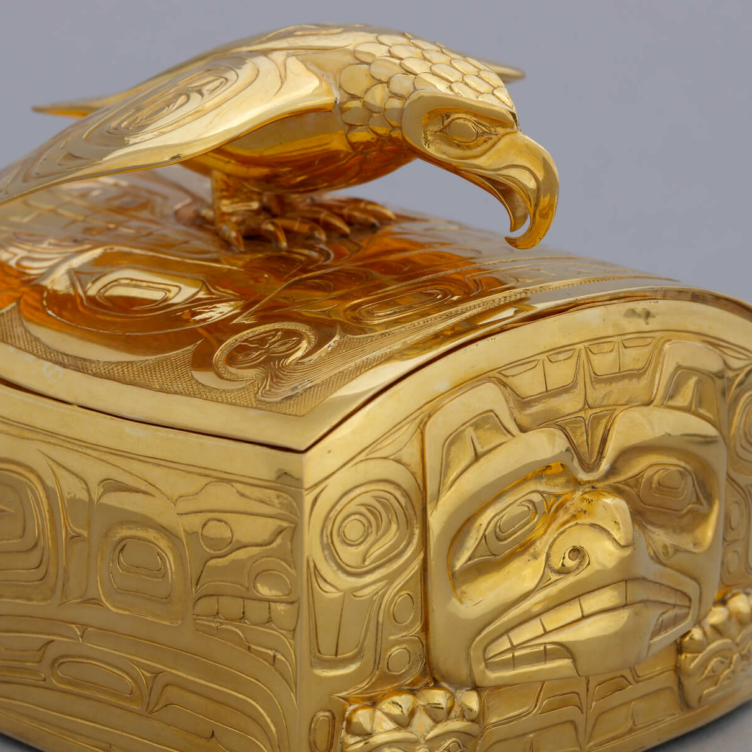 Pride and Resistance
Pride and Resistance
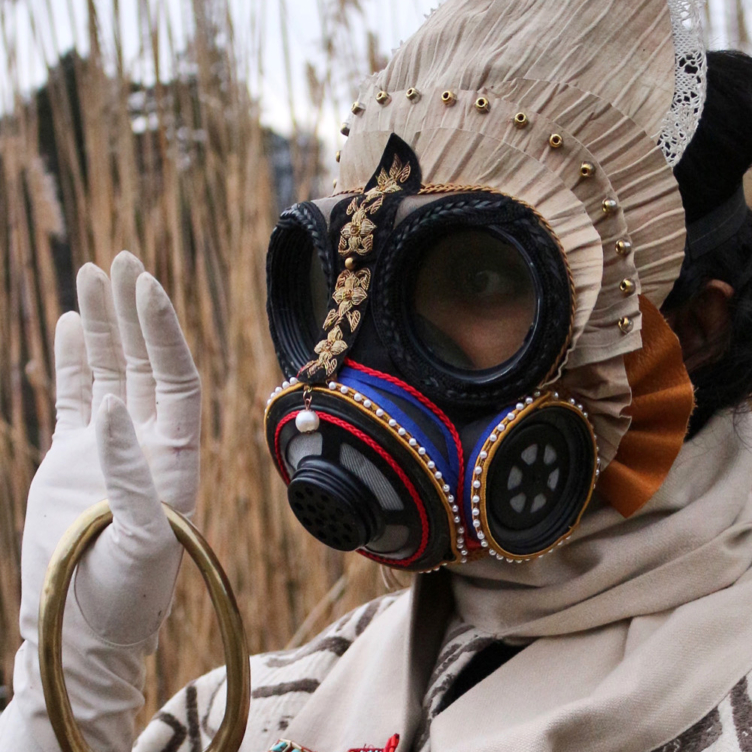 Dressed for Danger
Dressed for Danger
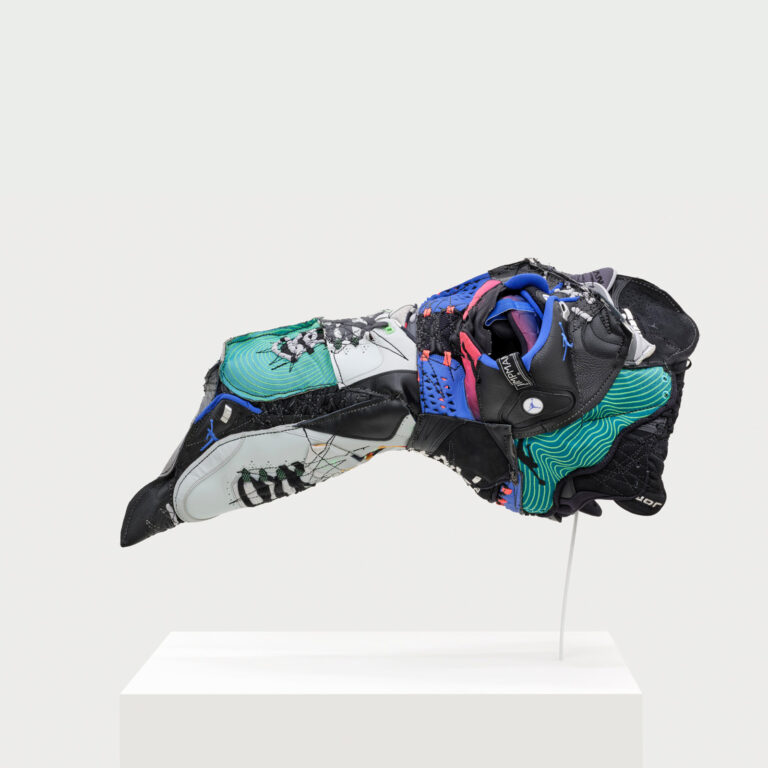 Masks from the Past
Masks from the Past
 Lessons from the Land
Lessons from the Land
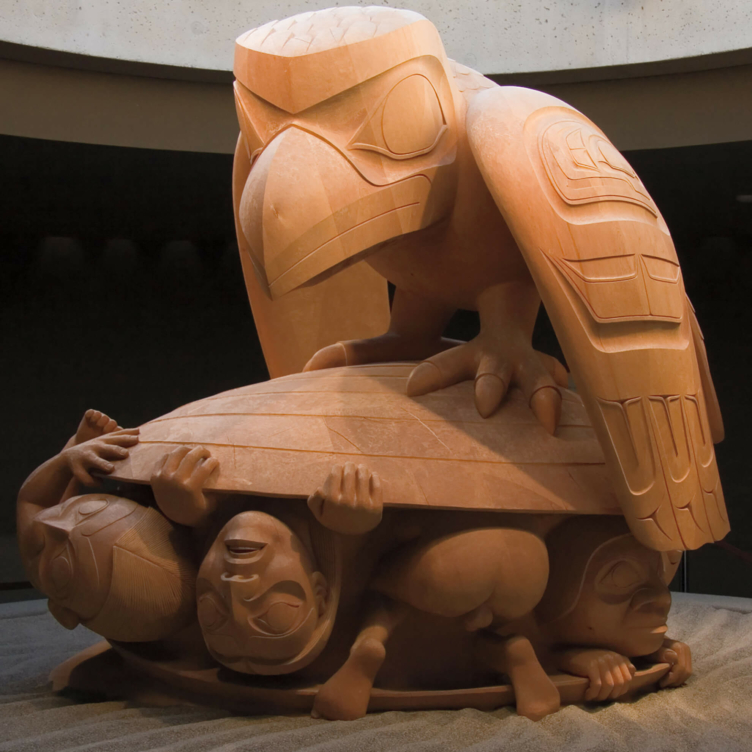 A Cultural Hero
A Cultural Hero
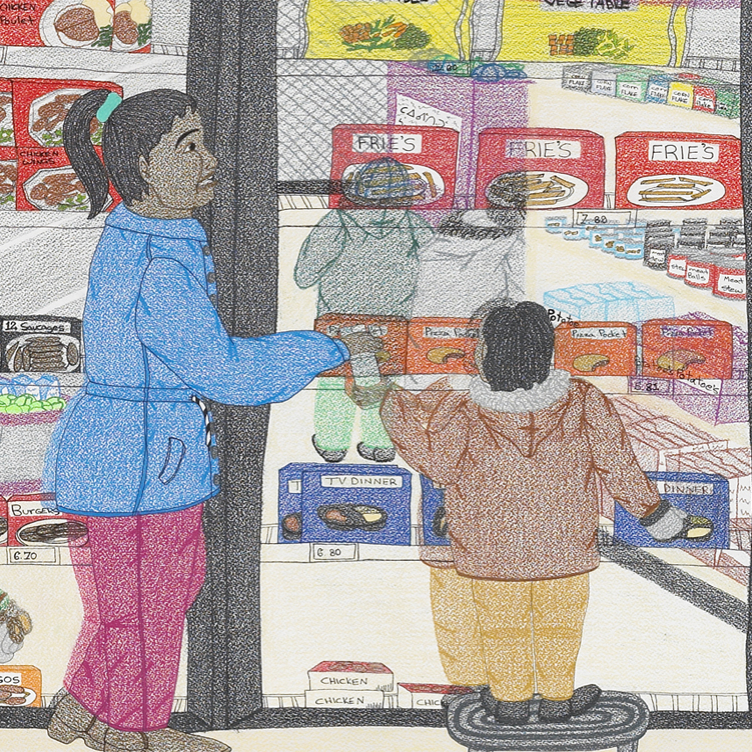 Food for Thought
Food for Thought
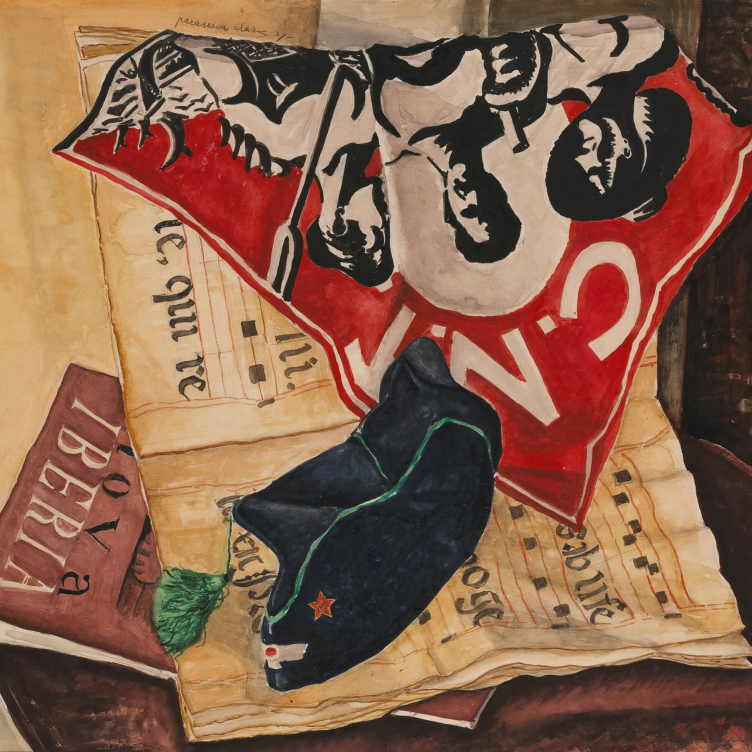 A Passion for Activism
A Passion for Activism
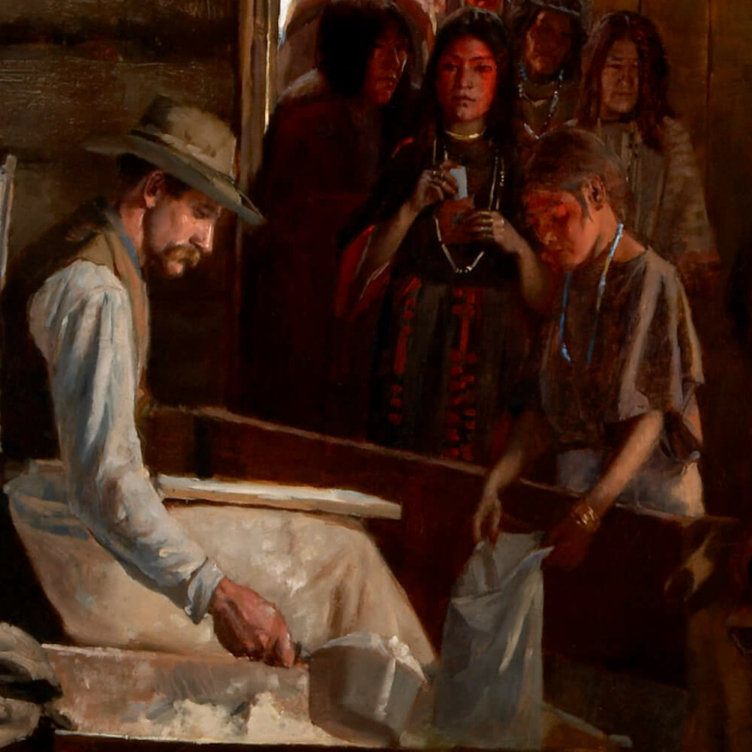 Starvation and Scandal
Starvation and Scandal